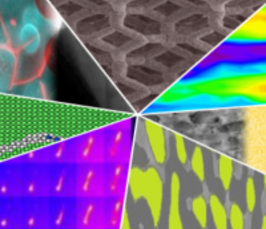Hydrogen-DRI in New Zealand: Developing a process for the hydrogen reduction of titanomagnetite ironsand
- Date: Apr 27, 2022
- Time: 09:00 AM - 10:00 AM (Local Time Germany)
- Speaker: Dr. Chris Bumby
- Robinson Research Institute, Victoria University of Wellington, New Zealand
- Location: Virtual Lecture
- Host: on invitation of Prof. Gerhard Dehm

Although geographically remote, New Zealand has a long history of innovative ironmaking. Today, New Zealand’s only integrated steel plant produces ~ 650 kt per year of steel from indigenous titanomagnetite ironsand ore. It also produces ~ 2% of the raw global supply of vanadium oxide concentrate, which is produced as a secondary by-product from this process. However, this plant also accounts for more than 50% of NZ’s total national industrial CO2 emissions.
Hydrogen-DRI appears the most viable future route to realising near-zero-CO2 emissions from industrial ironmaking. New Zealand’s national electricity supply is > 85% renewable, making it an attractive location for both green hydrogen production, and a hydrogen-DRI plant. This talk will present some early-stage results from our ongoing research programme investigating a new process for the hydrogen reduction of NZ’s titanomagnetite ironsand. Both fluidised bed and pelletised vertical shaft systems are being studied.
At present, fluidised beds are not widely favoured for the reduction of iron ore fines, as they are known to be susceptible to ‘sticking’ that leads to sintering of the bed during reduction with methane or syngas. However, we have found that the unusual chemical composition of NZ ironsand means it can be fully reduced in a laboratory fluidised bed without the onset of sticking, even at temperatures up to 1000C. This behaviour is due to the formation of an encapsulating Ti-rich oxide shell around each individual particle in the bed, which prevents metal-metal contact between particles during the reduction process. The formation of this oxide shell is driven by the low solubility of Ti and Al ions in the wustite phase which is formed during the initial stages of reduction. This effect also drives the formation of distinctive FeO channels throughout the interior of partially reduced ironsand particles.
Building on these initial results, the potential pathway to developing a new hydrogen-DRI industry in NZ will then be discussed. Several unresolved issues will be highlighted as important areas of focus for future research.